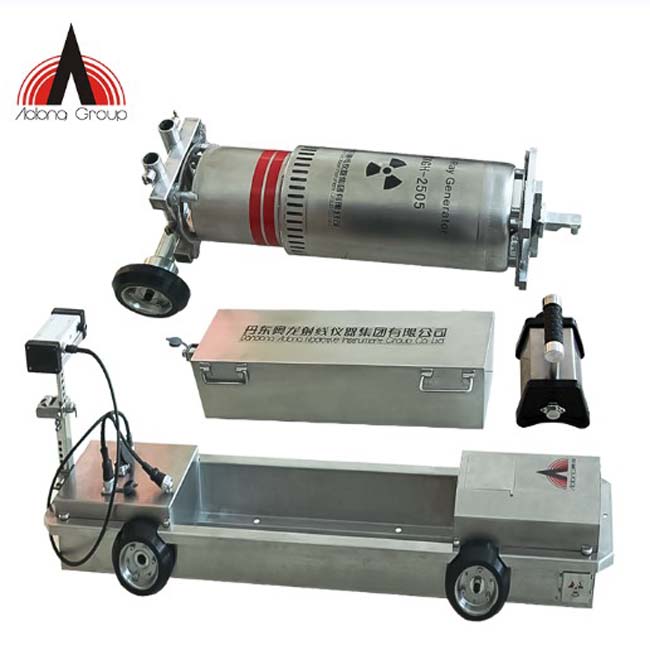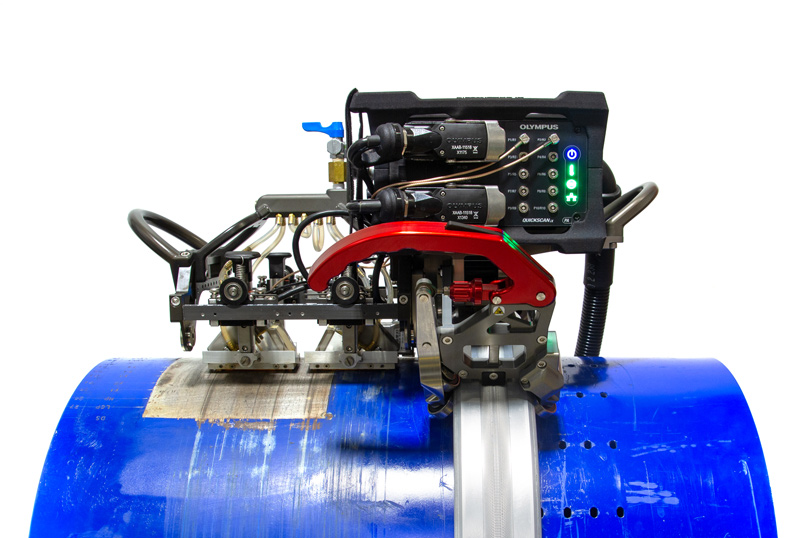Advanced Techniques in Pipeline Welding Examination: Technologies and Technologies for Enhanced Precision and Reliability in Weld Assessment
The landscape of pipe welding inspection is undertaking a significant change, driven by advanced techniques that assure to enhance both accuracy and dependability in weld assessments. Innovations such as computerized inspection systems and progressed imaging modern technologies are redefining standard techniques, while non-destructive screening techniques make certain material honesty is preserved.

Significance of Weld Assessment
Ensuring the stability of pipe welds is critical to the general safety and reliability of industrial systems. Rigorous inspection of welds is essential to the lifecycle of pipe framework.
The significance of weld inspection prolongs past simple compliance with regulative criteria. It acts as a positive action to recognize and remedy imperfections, such as incomplete blend, porosity, or cracks, prior to they rise right into significant issues. Reliable evaluation methods likewise contribute to the longevity of pipelines, reducing maintenance prices and boosting operational efficiency.
Furthermore, thorough weld inspections foster depend on amongst stakeholders, including regulatory bodies, capitalists, and the areas offered by these pipes. By guaranteeing that all welds satisfy the required standards, companies can mitigate threats and maintain their track records. In recap, weld assessment is crucial not only for operational integrity but also for the more comprehensive effects it holds for safety and security and environmental stewardship.
Automated Evaluation Equipments
The combination of computerized evaluation systems in pipeline welding has revolutionized the method to making sure weld top quality and honesty. These systems employ sophisticated robotics and expert system to perform assessments that are not only much faster however also more constant than conventional methods. Automated systems can cover comprehensive lengths of pipelines efficiently, catching information that human assessors might forget due to fatigue or ecological problems.
One of the crucial benefits of computerized examination systems is their ability to operate in hazardous atmospheres, reducing the danger to human assessors. They utilize various non-destructive screening (NDT) methods, such as ultrasonic testing and magnetic fragment inspection, to assess weld honesty without endangering the structure. The data accumulated is refined in real-time, allowing for prompt comments and prompt restorative activities when issues are recognized.
Furthermore, automated systems help with the standardization of evaluation procedures, making certain that each weld is examined against regular requirements. This not only enhances the reliability of outcomes but also streamlines compliance with regulatory criteria. As sectors remain to focus on safety and security and operational efficiency, the duty of computerized evaluation systems in pipe welding will definitely expand, leading the way for a lot more advanced quality guarantee methodologies.
Advanced Imaging Technologies
Regularly employed in modern-day pipeline welding inspections, progressed imaging technologies have actually substantially boosted the capability to find and assess weld defects. Methods such as electronic radiography, computed tomography, and thermographic imaging supply examiners with high-resolution photos that expose sub-surface problems and structural variances that might be unnoticeable to the nude eye.
Digital radiography utilizes digital sensors to capture photos, permitting immediate evaluation and enhanced picture comparison. This causes faster inspections and boosted accuracy in determining vital flaws. Computed tomography, on the various other hand, provides three-dimensional imaging, making it possible for examiners to picture intricate geometries and analyze the honesty of welds from numerous angles - Pipeline Welding Inspection. This discover here deepness of evaluation is important for discovering issues that traditional approaches might ignore.
Thermographic imaging uses infrared innovation to find variations in temperature level, determining locations of possible weak point or tension within the weld. These advanced imaging modern technologies not just boost defect discovery rates however also minimize the moment and resources needed for pipe examinations. As a result, they play an important duty in keeping pipe safety and security and reliability, guaranteeing compliance with market criteria while minimizing operational dangers.
Non-Destructive Checking Techniques
Using numerous techniques, non-destructive screening (NDT) methods are necessary in pipeline welding inspections, permitting the analysis of weld honesty without jeopardizing the product's structural integrity. NDT incorporates a series of methods, consisting of ultrasonic testing (UT), radiographic screening (RT), magnetic bit testing (MT), and dye penetrant testing (PT) Each method has distinctive advantages and applications depending on the certain requirements of the examination.
Ultrasonic screening uses high-frequency audio waves to spot interior imperfections, offering accurate dimensions of weld density and integrity. Pipeline check over here Welding Inspection. Radiographic testing uses X-rays or gamma rays to create pictures of the weld, exposing interior problems that may not be visible externally. Magnetic particle screening works for finding surface and near-surface discontinuities in ferromagnetic materials, while color penetrant screening highlights surface fractures by utilizing a colored color
Including these NDT approaches right into pipe welding inspections enhances the accuracy and dependability of weld evaluations, guaranteeing that potential failures are recognized early. As industries require higher criteria for security and efficiency, the role of NDT in maintaining the honesty of welded structures proceeds to be essential in pipeline construction and maintenance.

Future Trends in Weld Analysis
As we look to the future of weld analysis, improvements in technology are positioned to revolutionize the approaches employed for assessing pipe honesty. The assimilation of fabricated knowledge (AI) and artificial intelligence in inspection procedures is expected to improve the accuracy of defect detection and anticipating upkeep. These technologies permit real-time information evaluation, making it possible for assessors to recognize potential problems prior to they escalate right into substantial troubles.
Furthermore, the usage of drones geared up with innovative imaging systems is acquiring traction. These airborne examinations can cover vast areas promptly, capturing high-resolution pictures and data that can be evaluated for flaws in hard-to-reach places. This not only boosts safety yet likewise enhances effectiveness in the evaluation process.
Furthermore, the advancement of clever sensors embedded in pipe systems provides the possibility for continual website here monitoring. These sensing units can find modifications in pressure, temperature, and resonances, supplying useful insights right into the health of the welds in time.

Conclusion
In verdict, the integration of innovative techniques in pipeline welding evaluation substantially improves the accuracy and reliability of weld analyses. Technologies such as automated inspection systems, progressed imaging innovations, and non-destructive testing approaches play a critical role in enhancing issue discovery prices and promoting aggressive maintenance techniques. As these modern technologies remain to develop, they will certainly even more ensure the safety and efficiency of pipeline systems, eventually adding to the honesty of vital infrastructure.
